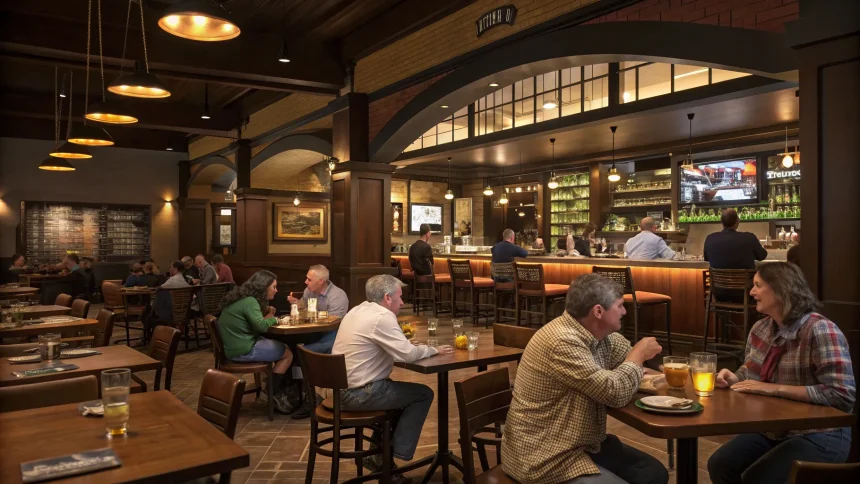A well-known neighborhood tavern says more workers at the office are driving sales higher, after President Donald Trump issued an in-person work mandate for federal staff. Manuel’s Tavern owner Brian Maloof told Fox Business’ Varney & Co. that foot traffic and receipts have improved, tying the change to busier weekdays and a livelier after-work crowd.
The comments point to a broader question facing cities: how much can workplace rules move the needle for small businesses that depend on office workers? The timing matters for restaurants, bars, coffee shops, and retail stores that saw revenue slump when commutes disappeared.
A barometer for the return-to-office shift
Manuel’s Tavern owner Brian Maloof joins ‘Varney & Co.’ to discuss the increase in business seen as a result of President Donald Trump’s in-person work mandate.
Manuel’s Tavern, an Atlanta institution known for its political clientele and community ties, has long served as a gathering spot for workers and local leaders. Maloof’s on-air remarks suggest weekday patterns are stabilizing. Lunch periods are busier, and early evening tabs have grown as employees head out with colleagues after work.
Neighborhood businesses often act as early indicators. If the lunch rush returns, nearby dry cleaners, barbers, and rideshare drivers tend to benefit as well. That ripple can strengthen tax collections and help landlords fill storefronts that sat empty during the work-from-home surge.
What a mandate means for local economies
Mandated in-person work for federal employees can shift habits beyond government offices. Private employers sometimes match federal schedules, and transit systems adjust service to meet rising demand. More regular commuting supports:
- Higher weekday sales for restaurants and bars near office corridors.
- Increased transit and parking revenue for cities and agencies.
- More predictable staffing needs for service businesses.
For a venue like Manuel’s, even a modest uptick can change the math on payroll and inventory. A steady Monday-through-Thursday crowd spreads revenue across the week instead of concentrating it on weekends.
Data points and trend lines
Building access data in major metros has shown gradual gains since 2023, with office attendance moving from pandemic lows into the mid-range of historical norms. While many firms still operate hybrid schedules, midweek peaks have become common, lifting sales on Tuesdays, Wednesdays, and Thursdays.
Restaurant groups report that suburban locations near large campuses have seen similar patterns. City cores with dense federal or state offices may benefit more quickly from a mandate than regions with primarily tech or creative jobs that remain hybrid-heavy.
Mixed reactions and open questions
Worker views are divided. Some welcome face time and clearer boundaries between job and home. Others worry about commute costs, childcare, and flexibility. Business owners are watching to see whether attendance is steady or fades after initial enforcement.
Unions representing federal employees have pressed for hybrid options, noting productivity gains and retention benefits since 2020. Employers, meanwhile, argue that mentoring and collaboration improve when teams meet in person. City officials must balance these interests while planning transit, public safety, and downtown programming.
What it means for small businesses
Maloof’s report highlights how policy can shape main street outcomes. For many independent owners, consistency is as important as volume. Reliable weekday demand supports training, reduces turnover, and helps keep menus and prices stable.
Analysts say the next phase will depend on enforcement of attendance rules, private-sector follow-on, and whether hybrid schedules settle into predictable patterns. If midweek surges continue, businesses may refine hours and promotions to match those days.
As the fall season approaches, Manuel’s and similar venues will track whether the lift holds. Early signs point to a cautious rebound, but the picture remains uneven across neighborhoods.
Maloof’s message is simple: when workers return, local economies get a lift. The coming months will show whether the current bump is an early step toward a durable weekday routine—or a short-lived spike that requires a new plan.







